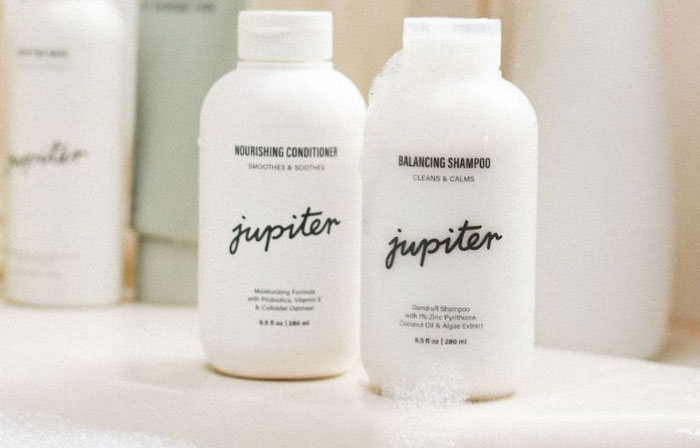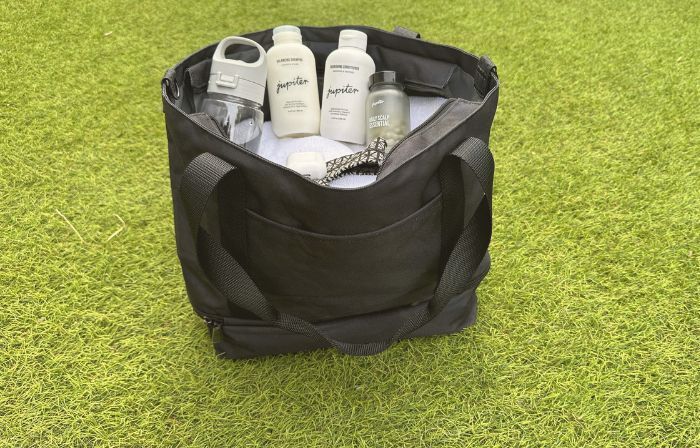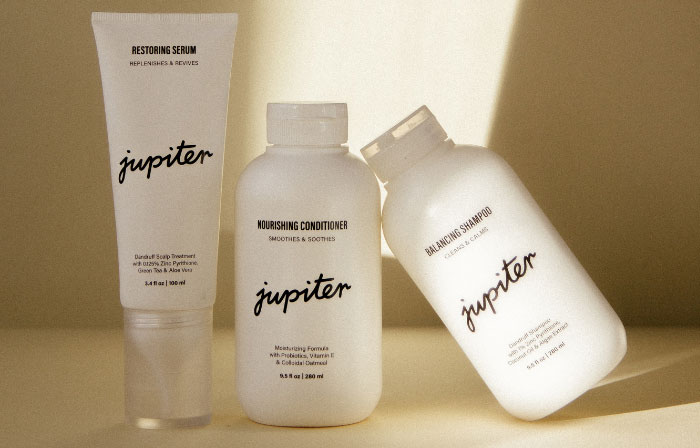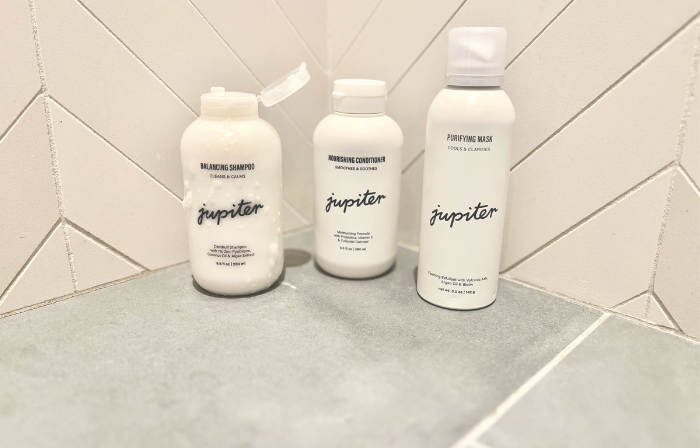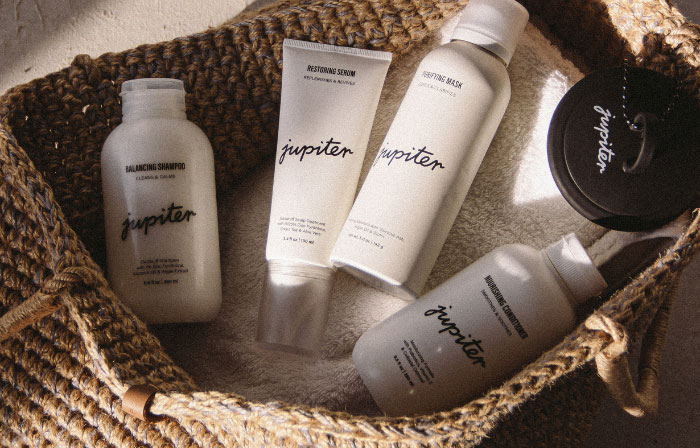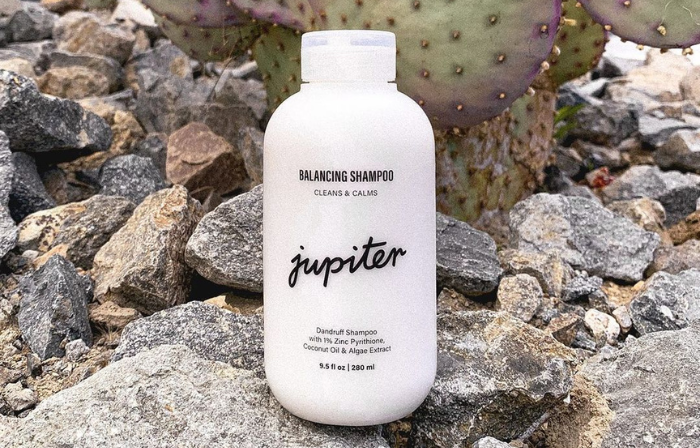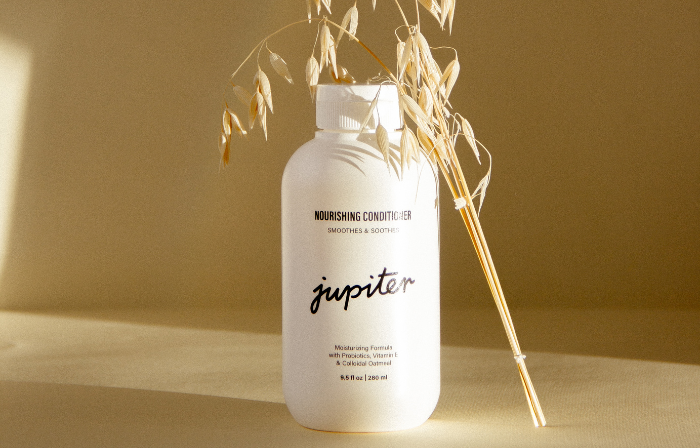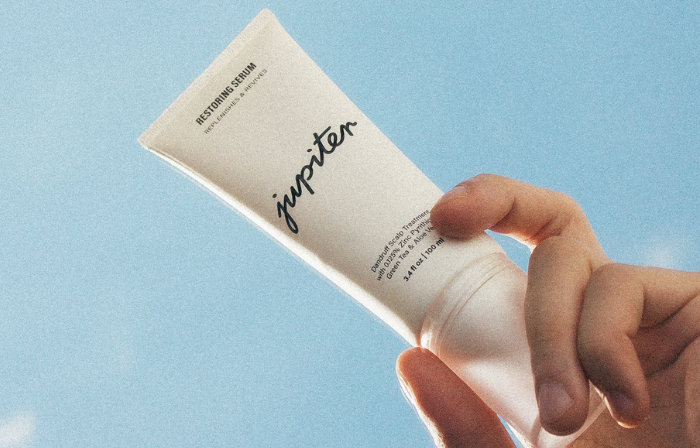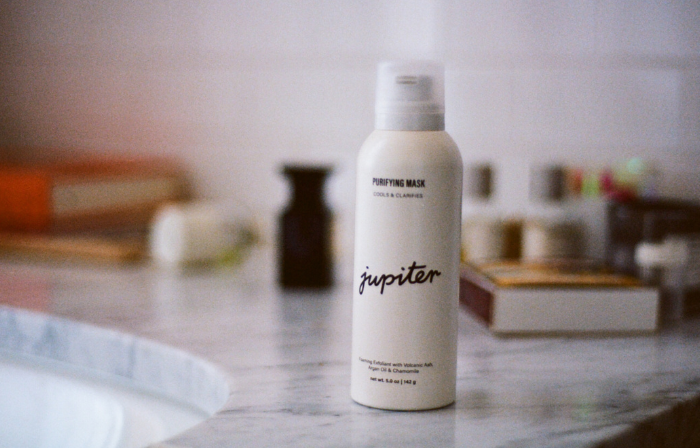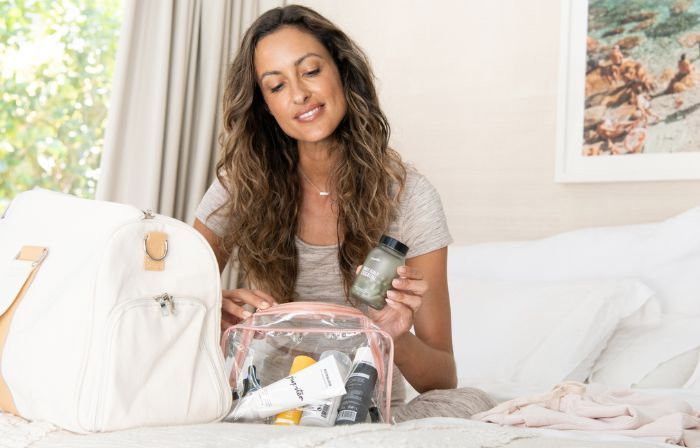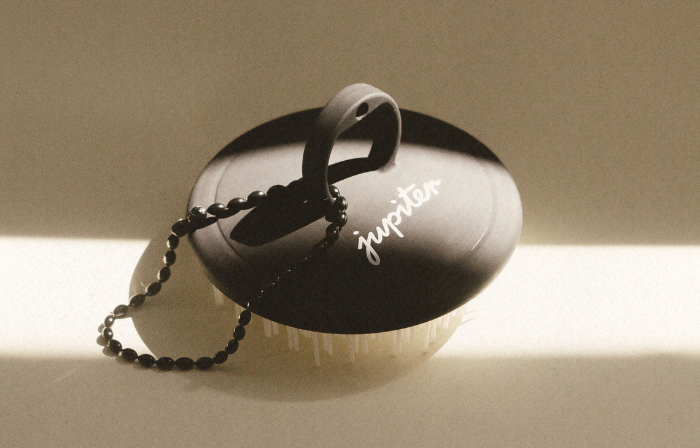Have you heard of hair oiling? If you’re on the same side of #hairtok as us, you’ve probably stumbled across videos of women talking about oiling their hair.
It’s a common practice, particularly in India and among those who follow Ayurvedic medicine. But what is hair oiling, and what does it actually do? People have turned to this practice to help hydrate hair strands, prevent breakage and split ends, and support blood flow to the scalp.
For those whose scalps are seriously prone to dryness and irritation, hair oiling might seem like a tempting solution. And while scalp hydration is a worthy cause, as scalp professionals, we have to ask the tough questions: Is hair oiling safe? And are there ways to get the same benefits without applying oil directly to the scalp? Our scalp’s skin is sensitive. Without proper care and nourishment, our hair strands can suffer. If you’re looking to encourage hydration and help to restore the bonds that protect your hair cells, some of the principles of hair oiling can help, but it’s important that you approach this practice with your scalp’s health in mind. Otherwise, you can do more harm than good. Keep reading for an overview of the practice of hair oiling, plus tips to get the same benefits safely, from a dermatological point of view.
What Does Oiling Your Hair Accomplish?
We know DIY hair trends can be tempting. When you’re desperate for results, you might be willing to try anything. But DIY hair treatments — as anyone who ever attempted to perm their own hair will tell you — can be dangerous.
So let’s first look at some of the positive benefits of hair oiling, then get into how you can achieve those benefits without putting your scalp in harm’s way.
Helps Add Moisture
We know it might sound a little counterintuitive if you deal with an oily scalp, but keeping your scalp and hair strands hydrated is so important and is frequently underappreciated. The scalp has its own method of moisturizing hair strands. Hair follicles produce sebum, a natural oil, which moves down the hair strands to protect them. Too much sebum production tends to lead to flaking and scalp irritation, but not enough sebum can also lead to flaking due to a dry scalp.
Curlier hair patterns tend to have a harder time transferring sebum down the strands, as tight, coiled hair is more difficult to traverse. Thin, straight hair will allow the sebum to move down the strand more easily, which is why people with fine hair often complain about grease. Regardless of your hair type, most of the time sebum can only reach the first inch to four inches of the hair strand. If you have hair down to your shoulders or longer, it’s very likely that your ends are dehydrated and may be prone to damage.
Oiling your ends and scalp can encourage hydration and moisture, protecting the hair's bonds. One study found that regular application of virgin coconut oil to the scalp in pediatric atopic dermatitis patients helped improve the commonly graded symptoms of AD.
Another 2015 study found that regular oil application to hair strands can effectively moisturize them, enhancing their strength and protecting them from breakage. That said, more research is needed to decide this conclusively.
Helps to Combat Split Ends
Let’s be real. We’ve all picked at our split ends by pulling the hair apart. It’s like itching at a scab; it’s just too hard to resist. (p.s., we’d love it if you could try to resist).
Split ends happen when hair strands are especially dry and brittle. This can be a result of several factors. Heat damage from styling tools, arid and hot weather, and washing your hair too often can lead to breakage. While regular trims are the best way to fight split ends, hair oiling can help to improve the appearance of split ends. Restoring the moisture on the strand can make hair appear to be less frazzled (though it won’t actually resolve a split end).
One reliable benefit of hair oiling is that it can be a powerfully soothing experience. As far as self-care goes, hair oiling can help you be present in the moment, get you in touch with your body, and increase circulation to your scalp, which all can help improve the conditions for hair growth.
Supports Scalp Balance
Lastly, there are some residual effects of oil that can help support your scalp’s microbiome.
There are many microorganisms on your scalp, including fungi, bacteria, and skin cells. Don’t worry; they’re supposed to be there. These microorganisms interact and exchange information, ushering in sebum production and new hair growth. However, when that microbiome is out of whack, the scalp and hair can react in several ways. Dandruff tends to coincide with an overgrowth of fungi on the scalp called Malassezia. Many oils contain antifungal properties, helping to bring a sense of balance back to the scalp. That said, if you’re dealing with flakiness, the only way to truly keep flakes at bay is to use a shampoo that includes the active ingredient Zinc Pyrithione, like our Balancing Shampoo, which is clinically proven to get at the root of flaking and has tested antifungal properties. We’ve included a carefully selected set of natural and essential oils in our products in addition to our flake fighting active ingredient to help balance and soothe the scalp.
Applying raw or virgin oils directly to the scalp can lead to irritation and itching, especially if they are improperly dosed.
6 Tips for Oiling Your Hair Effectively
So now that we’ve covered the basics, let’s talk about how to oil your hair right, getting these same benefits, but ensuring you’re not putting your scalp in harm’s way.
Opt for a Tested Product
There is some misinformation out there about what kind of oils you can and should put on your scalp. While essential oils like rosemary oil, coconut oil, and lavender oil can be very helpful in cleansing and balancing your scalp, we would never recommend placing these oils directly onto your scalp unless they are part of a professionally formulated scalp care product.
The skin on your scalp can be sensitive just like any other part of your body. Applying raw or virgin oils directly to the scalp can lead to irritation and itching, especially if they are improperly dosed. It can also clog pores and impact the health of your hair follicles which can impact hair growth and strength in the long term.
If you’re looking to reap the benefits of these specific oils, opt for professionally formulated products that include key natural and essential oils on the ingredients list, and have been tested for direct, topical use. Jupiter’s entire line of scalp care products include specially selected oils along with proven active ingredients to ensure you achieve a balanced, healthy scalp safely and effectively.
Our Restoring Serum includes essential oils paired with niacinamide and the powerful active ingredient Zinc Pyrithione so that your scalp reaps the benefits of these natural oils while also addressing oil production between washes.
It still can be a great, soothing self care exercise that can help your hair get hydration and support circulation to the scalp. And if you really think about it, choosing a product that’s been tested and is cleared for use is perhaps the best self care of all.
Clean and Detangle Your Hair First
For an oil-based scalp or hair treatment to work best, it’s important to apply it to a clean scalp and cleansed locks. Your hair can be dry or damp, but it must be cleaned for the hair strands to absorb the product you’re applying fully.
Our best advice before using an oil-based product is to wash hair, lightly dry it with a microfiber towel, and gently detangle it. By detangling your hair, you’ll prevent knotting and friction while the product is in your hair, which would be counterproductive to what you’re hoping to accomplish.
Keep It Gentle
Be especially gentle with your hair and scalp when applying any product. Use a wide tooth comb to ensure any product applied to your hair strands is evenly distributed, but take care not to pull too much.
Once you’ve applied the product, you can gently and loosely twist your hair into a small bun. Remember to go easy on your hair strands. There should be no undue tension on your hair. When applying product to your scalp, gently massage it in with your fingers by creating an L shape with your hand. Light exfoliation will increase circulation to your scalp, helping to encourage hair growth, but too much exfoliation could irritate and damage your hair follicles.
Don’t Rinse Off Too Soon
Some people recommend sleeping with hair oil to give your hair strands as much time as possible to reap their benefits. We think you’re better off washing it before bed time, unless the product is specifically designed for overnight use. In that case, we’d recommend sleeping with your hair in a silk scarf or bonnet to protect your hair strands from breakage and keep any oils off your pillowcase. If you’re not doing an overnight treatment, give your hair at least one hour with the product in it. Natural ingredients need some time to work their magic. Relatedly, when it comes to frequency, there are no rules. Try it once or twice a week and see how that feels before doing it more often.
Don’t Heat Your Product
When you watch hair oiling videos, you’ll often see people heating up the oil before applying it. We would caution you against that. Heating a leave-in treatment can change the chemistry of the ingredients and can potentially do damage to your scalp. Applying hot oil, hair care products, or DIY masks to your scalp is extremely dangerous and not recommended. Remember, your scalp is especially sensitive. Hot substances can do real damage and will totally negate the benefits of treating your hair in the first place.
Do a Patch Test First
As always, we’d recommend doing a test patch before using a new product. Topical allergies can surprise us sometimes. Apply a bit of the product to your arm and wait an hour to see how your skin reacts. If you see any redness or experience any itching, don’t apply it to your scalp. Trust us.
Last Thoughts on Oiling Your Hair
As a brand, we always look to science when it comes to hair and scalp health. We believe in proven active ingredients alongside natural ingredients to help improve hair strength, bring balance to the scalp’s microbiome, and help encourage new hair growth. While we don’t advocate for the direct application of warm oils to the scalp and hair strands, we know how important certain oils are to maintaining a balanced scalp. That’s why we’ve included specially selected oils like coconut oil, lavender oil, and rosemary oil, among others in our formulations alongside proven and effective active ingredients.
Want to learn more about our science backed formulations? We thought so! Check it out here.
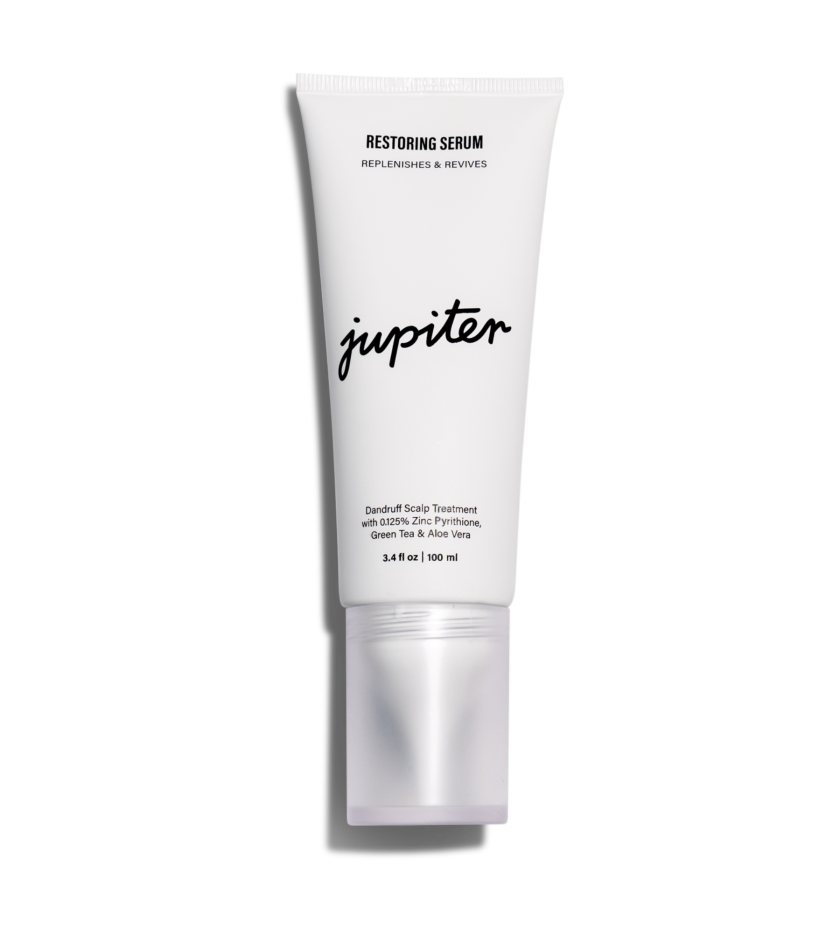
Your scalp savior outside of the shower. Our Restoring Serum is best for those with oily scalps, more severe flaking or wash their hair less frequently. Apply this medicated leave-in (active ingredient Zinc Pyrithione) directly to the scalp in between washes to relieve and control itching, flaking, and redness.
